Our page on the Jewish Scholars of Yemen is part of a project that looks at the Jews of Yemen whose history, in this area, dates back for thousands of years.
Also in the Jews of Yemen Docuweb:
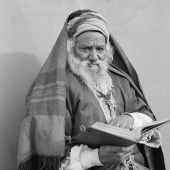
Yemenite Jews &
American Colony
________________
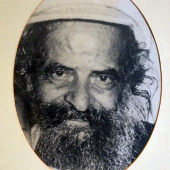 Kinneret and Yemenite
Kinneret and Yemenite
Pioneers
________________
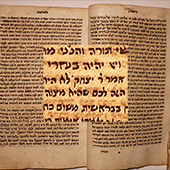 Jewish Scholars
Jewish Scholars
of Yemen
________________
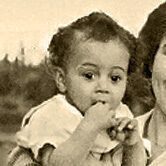
Missing Children
Affair
_______________
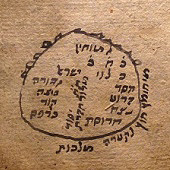 Links with
Links with
Other Jewish Centers?
________________
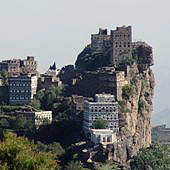 A Brief Background
A Brief Background
About Yemen
________________
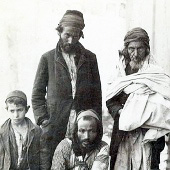 Early Immigration
Early Immigration
________________
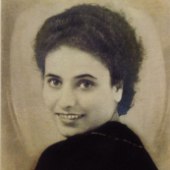 Personal Stories
Personal Stories
________________
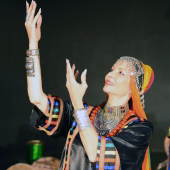 Customs, Culture and
Customs, Culture and
Folklore
________________
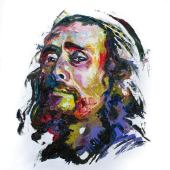 Relations with
Relations with
their Local Neighbors
________________
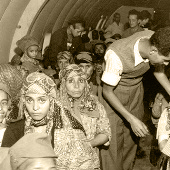
Operation 'On Wings
of Eagles'
________________
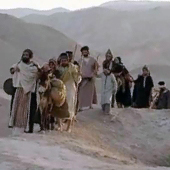 When did the Jews
When did the Jews
Arrive in Yemen?
________________
| Jewish Scholars of Yemen includes:
- Introduction to the Scholars of Yemen
- Rabbi Natan’el (Beirav) al Fayyumi – 12th Century
- Rabbi David Ben Amram (Ha-)Adani – 14th Century
- Rabbi Zecharya ben Shlomo Harofeh (Haraza) – 15th Century
- Rabbi Zecharya (Yihye) Al-Dhahiri – 16th Century
- Rabbi Shalom Shabazi – 17th Century
- Rabbi Yihye Tzalah (Maharitz) – 18th Century
- Rabbi Sar-Shalom Mizrachi…Sharabi – Harashash – 18th Century
- Rabbi Yihye Kapah – 19-20th Century
- Rabbi Itzhak Halevi – 19-20th Century
- Rabbi Hayyim Habshush – 19th Century
Introduction to the Jewish Scholars of Yemen
The Jewish communities of Yemen were scattered in many hundreds of towns and villages across the land. They were able to survive and maintain their identity throughout the centuries owing to strong communal links and a devoted approach for maintaining the rules and regulations of their religion. This was preserved by the chief rabbis, local rabbis, scholars, communal judges, communal administrators, writers and poets of each generation.
Prof. Yosef Yuval Tobi is Professor (emeritus) of medieval Hebrew poetry at the University of Haifa, Israel, and Head of Ben-Shalom Center for the Study of the Jews of Yemen in Ben Zvi Institute, Jerusalem.
(Duration: 1:54 min)
The type of general studies and sciences taught in Europe were not common in Yemen throughout the years. Education concentrated, from an early age, on bible studies, interpretations, punctuation and grammar, basic math and later in philosophy. It is no surprise therefore that many of the Jews of Yemen reached a high scholastic level in these areas of studies but are not known as scholars in the general studies and sciences.
Only boys studied. The Jewish boy started his education with his father. Very quickly however, due to financial constraints, the children were sent at the age of about 3 to a school located in a room or a synagogue where they would start their formal education for about 8 to 10 years. Studies started at about an hour and a half after sunrise and ended at sunset.
Professor Tobi answers the question ‘What is meant by the Scholars of Yemen?’ (Duration: 2:05 min)
Most of the teachers (Teacher = Mori) were not affluent. This was usually their sole profession and they lived off the money that they got from the parents of the pupils. Sometimes they would get food or would be invited to the student’s homes for meals. By the age of 13 the child could study with the adults and participate in the responsibilities of synagogue activity. Even younger, he would go with his father to sessions that were conducted with the rabbi and would be exposed to the commentaries and writings of important scholars.
Professor Tobi answers the question ‘What is known about the Jewish scholars in Yemen prior to Islam?’
(Duration: 3:18 min)
Our aim in this page is to discuss a small group of the Rabbis/Mori’s who can be considered as Jewish scholars of Yemen. In fact, there are many more who should be listed under this title (a comprehensive list can be found in the Encyclopedia of the wise men of Yemen by Dr. Moshe Gavra). Those whom we have chosen may or may not be included in a top 7 list by some experts in the subject. But, in our opinion, each of them has a value either for his contribution to the society he lived in or has a unique story or personality that suits this project.
Rabbi Natan’el (Beirav) al Fayyumi – 12th Century
Rabbi Natan’el al Fayyumi lived in Sana’a in the mid 12th century. He died at about 1165 CE.
Rabbi Natan’el lived during a difficult and challenging period for the Jews in Yemen because of the rise of the Shia Ismāʿīlī movement, which was active in promoting spiritual revival with Islam at the center.
The Jewish community was the first to be affected by this Islamic activity since the Jews symbolized the eternity of the Torah with their beliefs and codes of behavior. Rabbi Natan’el at that period was the leader and the spiritual authority of the Jewish communities in Yemen, and was prepared to strengthen his people.
He was known and respected by other Jewish communities across the old world. For example Maimonides (1135 – 1204) praised his wisdom and knowledge in a letter to Rabbi Fayyumi’s son.
Gan HaSikhlim; (Garden of the Intellects)
Rabbi Natan’el al Fayyumi’s main book, ‘Gan HaSikhlim; (Garden of the Intellects; in Arabic ‘Bustan El-Ikul’), raises essential questions about existence and tries to supply answers.
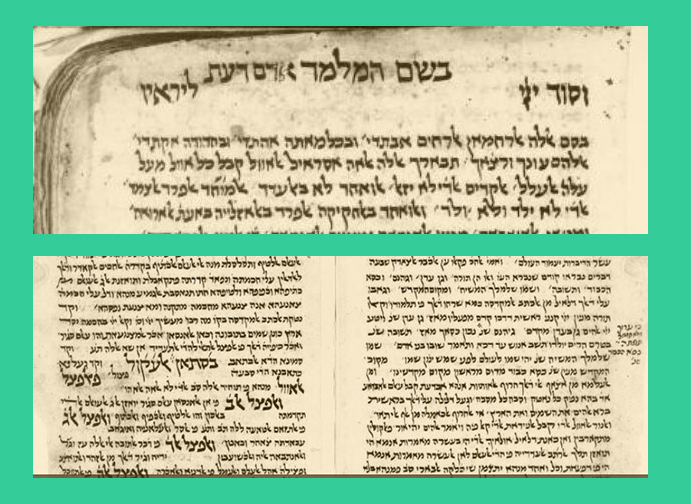
https://beta.nli.org.il/he/manuscripts/NNL_ALEPH000136439/NLI#$FL58348023
In his book, Rabbi Fayyumi wrote about philosophy and morals. There are 7 chapters in the book that discuss subjects such as: the uniqueness of G-d, the essence of mankind as the selected creation, worshiping G-d, the virtue of cleansing, the gate of security in G-d, the days of the Messiah and the eternity of the Bible, this world and the world to come. In some of the chapters Rabbi Fayyumi expressed independent ideas that are different from other scholars that preceded him.
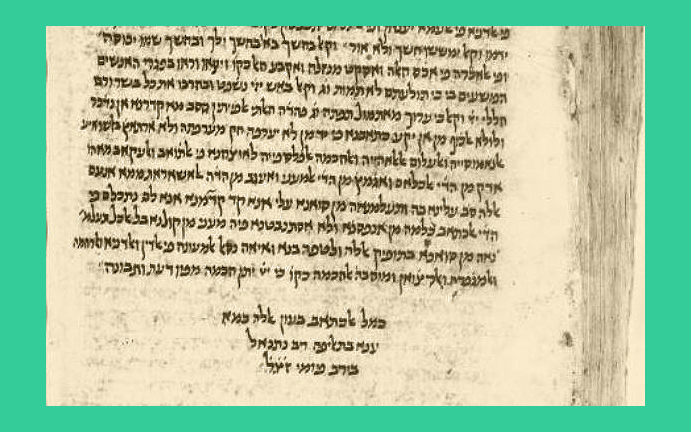
https://beta.nli.org.il/he/manuscripts/NNL_ALEPH000136439/NLI#$FL58348023
Debates with Muslim Scholars
Rabbi Fayyumi’s work reflects his knowledge of other religions and schools of thoughts. He debates with Muslim scholars who supposedly claimed that the Bible changed throughout the years. He also provided them with quotes from the Koran itself that stated that the Bible will never change since G-d’s words are eternal. (Translation into English from the Koran, sura Almaida, verse 42, that talks about the people of Israel: “how will they judge you and in their hands is the Bible with the laws of G-d, and the laws of G-d will never be forgotten”.
Rabbi Yaakov Fayyumi follows his Father’s Footsteps
After the death of Rabbi Natan’el al Fayyumi, his son, Rabbi Yaakov Fayyumi, took his position as the leader of the Jewish communities in Yemen. He continued with the efforts of his father to gather the community spiritually and to stand against the decrees of the Islamic regime and the repeated attempts to force conversion to Islam. The results were of partial success. Some of the community members did not resist the pressure and they converted to Islam. Some of them even served as a spearhead in the attempt to convert their own people.
As in other oppressive times, there was an appearance during this time of false messiahs who supposedly came to rescue the people. Rabbi Yaakov Fayyumi felt the need to consult the most respected figure in the Jewish world at that time, Maimonides.
Maimonides sent a letter to Rabbi Yaakov Beirav Fayyumi (son of Rabbi Natan’el). This letter was known in the years to come as Igeret Teiman (Epistle to Yemen). In the letter, Maimonides gives an answer to the questions and the concerns that were raised regarding Judaism and the question about its eternity; he also dismisses the phenomena of false messiahs.
Rabbi David Ben Amram (Ha-)Adani – 14th Century
Rabbi David Ben Amram Adani was born in Aden in the early 14th century, during a period that is referred to as the Islamic Golden Age.
Source of first image of manuscript in video: https://beta.nli.org.il/he/manuscripts/NNL_ALEPH000120982/NLI#$FL31235277
Interview with Prof. Yosef Yuval Tobi (Duration of Video: 2:03 min)
His family was blessed, throughout many generations, with scholars and leaders who served the Jewish community of Yemen.
Aden in the 13th/14th Century
Aden at that time was ruled by the Rasulid dynasty (1229-1454), a dynasty that controlled all of Yemen. This period was characterized by progress in all areas of life including infrastructure, commerce, science, literature, philosophy and more.
Aden’s strategic location made it an established port city for the ships that were carrying merchandise from east to west. The port was significant enough that, in 1419, the Ming Dynasty treasure fleet from China visited Aden, which was already a cosmopolitan city.
Jews integrated into this economic system and, in this context, connections with other Jewish communities in the Mediterranean and Europe improved.
Midrash Hagadol
Rabbi David ben Amram Adani served as the spiritual leader and, in fact, the president of all the Jewish communities in Yemen. Jewish scholars, throughout Yemen and also outside of Yemen, respected and admired him.
This is reflected in letters which include religious and philosophical discussions between Jewish communities of Yemen and other Jewish centers.
His most important work is ‘Midrash – Hagadol’ (The Great Biblical Exegesis).
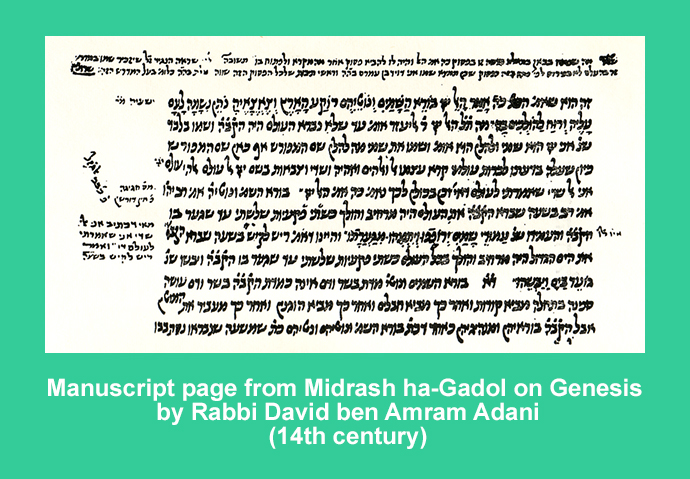
(Image source – Wikipedia)
It is the most comprehensive compilation of commentaries on the 5 books of the bible. This work is considered by scholars as the golden crown of the works that came out of the Jewish communities of Yemen.
‘Hamidrash – Hagadol’ contains essays, studies and commentaries on the bible that were collected by the Rabbi and are from the period of the Talmud, as early as the 1st century CE and the periods afterwards until the 14th century. Some of them were not known before.
‘Hamidrash – Hagadol’ was written in Hebrew only, unlike many Jewish works during that period, where Arabic language was also mixed with Jewish writings. The Hebrew language used was rich and clear.
An interesting note is that Rabbi David Adani added, prior to each ’Parasha‘ (the weekly Torah portion), rhymed poems that indicate the influence of the ancient Jewish poetry from the Holy Land.
Rabbi Zecharya ben Shlomo Harofeh (Haraza) – 15th Century
Rabbi Zecharya Harofeh (the Doctor), son of Shlomo, also called Mori Yihye Son of Suleiman Eltabib (or in Arabic – Elhakim Yihye Ibn Sleiman Elasraili), was born in the 1st half of the 15th century in the village Matznaa – bne-qaus in Dhamar governorate.
The village was located between the cities Dhamar, the capital of Dhamar governorate, and Sana’a, the capital of Sana’a governorate. Both cities were, at that time, economic and cultural centers.
Dhamar, which is located by the main road that connects Sana’a with a number of other governorates, was also known as a scientific center.
Rabbi Zecharya was one of the most respected and admired rabbis in Yemen at that time. He was a scholar, a valued biblical commentator, and a doctor by profession. He also wrote compositions analyzing Maimonides’ writings.
Some added to his name ‘Al-Dhamari’ indicating his connections to the city where they also believed that a portion of his writing was written. Not much is known about his life. Throughout the years and after his death scholars mentioned his name in relation to his valuable arguments and comments regarding some of Maimonides’ writings.
Rabbi Zecharya wrote his books in 3 languages like many other Jewish scholars in Yemen; Hebrew, Aramaic and Arabic.
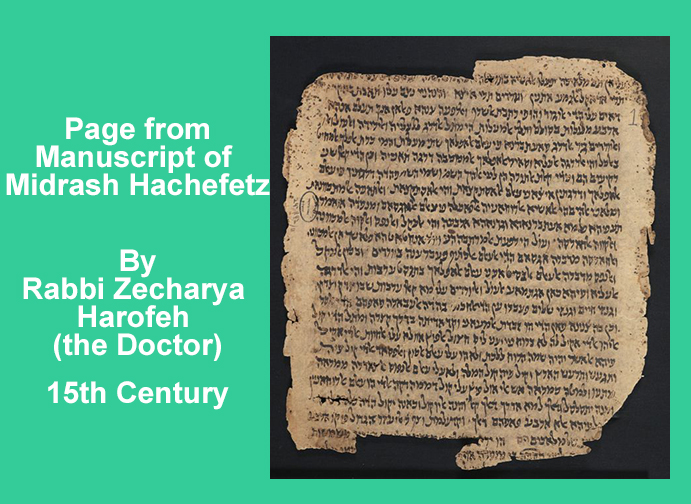
Image Source – The National Israel Library
Some of Rabbi Zecharya’s Known Books
- Midrash Hahefetz – which provides interpretation on the bible, (hahaftarot), the laws, and philosophical analysis. This book contains commentaries and legends that are not known from other sources.
- Interpretations to ‘Megilat Ester’ (Story of Esther) based on ‘Hazal’ commentaries.
- Interpretations to ‘Song of Songs’ – which is an allegoric philosophical interpretation based on Maimonides’ school of thought.
- Clarification of Yezikiel and Yeshaayahu – a commentary on the chariots described in the books of Yezikiel and Isaiah
Rabbi Zecharya (Yihye) Al-Dhahiri – 16th Century
Rabbi Zechariah al-Dhahiri was born in about 1519 in Kawkaban, a village located north/west of Sana’a. He was a scholar and a poet. His most important book was ‘The Book of Morals’.
Source of first image of manuscript in video:
https://web.nli.org.il/sites/NLI/Hebrew/digitallibrary/pages/viewer.aspx?presentorid=MANUSCRIPTS&docid=PNX_MANUSCRIPTS000103160-1#|FL29396586
Interview with Prof. Yosef Yuval Tobi (Duration of Video: 2:22 min)
Rabbi al-Dhahiri traveled from and to Yemen exploring and documenting his journeys to various countries. He stands out as an unusual and colorful figure among the Yemenite Jews of that time.
Rabbi al-Dhahiri’s Travels
Due to difficulties that the Jews experienced in Yemen, at the age of 20 he picked up and decided to travel out of Yemen. He went to India, Persia, Iraq, Syria, Turkey, Israel, Egypt, and more, where he documented his visits and described the Jewish communities in his writings. Rabbi Zechariah arrived in the land of Israel in 1568 and visited many cities such as Tzfat, Tiberias, Kfar-Kana, Nablus, Jerusalem. He stayed at the Yeshivat Yosef Caro in Tzfat and described the process of studying there.
Rabbi Zechariah al-Dhahiri acquired a wide knowledge in philosophy, Kabbalah and the poetry of Spain and the Arabic poetry of the ‘Middle Ages’. In Israel he met and studied with the Kabbalists of Tzfat like Rabbi Yosef Caro, Rabbi Shlomo Elkavetz and Rabbi Moshe Kordovero.
He was moved by what he saw in Jerusalem, which was somewhat neglected at that period. He went to Hebron and also visited monasteries in the Kidron Valley. A few years later he returned to Yemen facing the war between the Turkish Empire and the Yemenis, who were not prepared to accept foreign rule in Yemen.
Rabbi al-Dhahiri – Return to Yemen
Rabbi al-Dhahiri arrived back in Yemen bringing with him the books that he collected. Many give him the credit for spreading the Kabbalah in Yemen during his period.
He became one of the leaders of the Jewish community in Sana’a. There he was put in jail together with the other Jewish leaders, being accused by the Yemenis of siding with the Turks in their war. While in jail, he wrote some of his books and poems. He was released from jail after 7 years, together with the other Jewish leaders.
The Book of Morals (Moral Instructions)
Among the books that he wrote in jail was ‘The Book of Morals’. The book is composed of 45 copybooks with descriptions and details of his tours, historical facts, allegories, poetry, and moral essays. The book contains interesting details that teach about life in the places he visited, including life in Tiberias at that period, and about the yeshiva that was created by Dona Gracia Mendes, mother-in-law of Don Yosef Nasi.
Rabbi Shalom Shabazi – 1619-1720
Rabbi Shalom Shabazi was born in 1619 in the village of Nagad Alolid close to Taiz, which is located in the south of Yemen. His family moved to the village of Shabaz which is located north of Taiz. This is the area where he grew up, where he was active most of his life and where he died. He was buried in the cemetery of the Jewish neighborhood of Taiz.
Professor Tobi provides some highlights about Rabbi Shalom Shabazi
(Duration of video: 2:15 min)
His full name, as he wrote in his famous book “Hemdat Yamim” and in other books that he wrote, is “Shalem son of Yosef son of Avigad son of Halfon, called under the name of my family of the sons of Mashta and under the name of my town Al-Shabazi”.
Shabazi – Early Years
The spiritual leader of Rabbi Shalom Shabazi was Rabbi Yosef, son of Israel Mashta who was one of the greater poets that existed in Yemen and one of those who shaped the Yemenite Jewish poetry as holy, national and mystical. Rabbi Yosef ben Israel Mashta used to transfer his messages in poetry by quizzes and wit. He also widely used allegory in his poems, such as references to the people of Israel as a bride and to G-d as her husband .
Shabazi was brought up in an area that was inspired with spiritual activity. This served as a catalyst for the appearance of scholars who showed, in their writings, a great interest in philosophy, astronomy, astrology, medicine and more. All of these influenced the young Shabazi and he mentioned the places where he learned (like Shaab, Sahar(i)…) in his poems with longing and admiration. He also admired the scholars of Sana’a, was longing for their company and mentioned them in his poems.
Rabbi Shalom Shabazi lived in a period that was saturated with hostility to the Jews by the Islamic regime. This hostility continued in the area where he lived during the 1st Turkish conquest (1546-1629). In 1626, when the child Shalom was about 7 years old, the Turks used the local population, both Arabs and Jews, as forced labor. Among them were members of his family who were released after paying a high ransom. The family moved from one place to another until the Turks were defeated by the Arab ruler Hasan, son of Elkasam (Yefet ben Hashichmi).
Shabazi Witnessed the Suffering of the Jews
Adding to the early marks left on him during childhood, Shabazi was later affected by orders and decrees enforced by the regime in Yemen. He witnessed events such as the destruction of synagogues, forced conversion to Islam, excess of taxes (jizya – a protection tax for non Muslims ), the orphan decree, and the Mawza expulsion. This expulsion occurred in 1679 when Shabazi was about 60 years old.
He experienced the expulsion personally, and was affected by it greatly. The Mawza expulsion was burnt in the Jewish consciousness as one of the greatest disasters that happened to the Jews in Yemen – possibly the worst.
This expulsion played an important role in Shabazi’s writings and poetry. But, together with the mourning over the state of his people at that period, he also tried to offer, through his poems, a solution for enduring the physical and psychological crisis by personal, spiritual and national cleansing. He tried, and in many cases succeeded in lifting the morale of the people by also calling them to prepare for deliverance.
Shabazi’s Popularity and Fame
Shabazi was clever and witty. He had a wide knowledge of the bible and of the Kabbalah. He was also an expert in the medicine and sciences of that period.
Shabazi’s profession as a weaver did not bring him economic success. But he gained much respect and admiration among his people and among the local Arabs. Many came to him searching for his advice, answers and medical solutions.
His perfect knowledge of the Arab language and its nuances brought also the highest circles of the upper class to his door. Usually, owing to the connections that he acquired, he was able, in many cases, to soften the harsh treatment of the authorities towards the Jews.
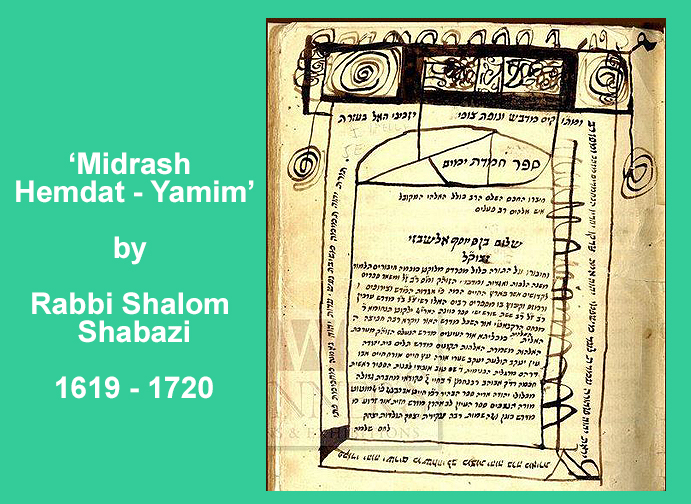
Image Source – http://aayintova.blogspot.com/2016/09/blog-post_92.html
Rabbi Shalom Shabazi wrote, during his life, over a thousand poems of which almost 1000 are documented so far. Among them there are religious poems, love poems, and poems about mourning, grief and deliverance.
Among Rabbi Shalom Shabazi’s Books
- ‘Midrash Hemdat Yamim’ – Interpretation of the bible based on Jewish mysticism (Kabbalah)
- Book of (or the destiny of) the Sand – A book that was written in order to stop the Jews from following Ibn Aluan who was known for his miracles and preaching, that Shabazi was against.
- Katab Alzig – A book on Astronomy
- Book of the Margalit – Composition that concentrates on active Kabbalah, with additions of Shabazi’s son Mori Shimon
- Use of Tehillim – Commentaries on chapters of the the book of Tehillim (Psalms)
- Tachlal Mashta-Shabazi – A prayer book
Legends about Shalom Shabazi
Rabbi Shalom Shabazi lost his daughter in a tragic event.
The legend claims that a ruler of the area where Shabazi and his family lived wanted to marry Shabazi’s daughter. Shabazi could not digest the idea that his beloved one would be forced out of her family and away from her religion.
On the way into the ruler’s palace he was walking with her, weeping and singing mourning songs. The daughter, troubled with her father’s sorrow and her own unexpected gloomy future, collapsed and died.
After his death (after the year ~1720) his grave became a focus point for pilgrimage for Jews as well as for Arabs and many legends are associated with his name and activities. At some point he acquired the reputation of being a healer and many would travel to his grave expecting healing and magic.
Rabbi Yihye Tzalah (Maharitz) – 1713-1805
Rabbi Yihye Tzalah (Maharitz) (1713-1805) was born in Sana’a. He was one of the most important rabbis in Yemen and one of the greatest last judges within the Jewish world in Yemen.
Source of first image of manuscript in video:
https://beta.nli.org.il/he/manuscripts/NNL_ALEPH002539470/NLI#$FL28345338
Interview with Prof. Yosef Yuval Tobi (Duration of Video: 2:48 min)
Already as a child he outshone others with his quick understanding, his sharp memory and depth of analysis. Yihye, the child, started his studies with his grandfather, the judge Rabbi Tzalah, and continued with two famous scholars in Sana’a; Rabbi David Mashraki and Rabbi Se-adya Ketii.
He supported his family by working as a silver/goldsmith. Later on, he was scribing bible books and scrolls for a living.
In his early forties (some claim before), Rabbi Yihye Tzalah was appointed the head of the Jewish courts all over Yemen. His authority was accepted without any doubt or question. Some of his answers regarding Jewish law were collected in the book ‘Actions of the Just’.
The Tradition of the Maharitz
Rabbi Yihye Tzalah was a modest man but at the same time he was strict whenever there was any shift in the practice of the Jewish law. He stood firm against the trend to change the praying codes to the ‘Shami tradition’ and merged the Sidur (the book of prayers) with his interpretations of it, called ‘Tree of Life’.
In his book he incorporated some codes of prayers from the Jews of Spain that were adopted in Yemen. He selected only those codes that did not contradict the ancient Jewish Yemenite codes and traditions which he knew from his teachers and from the ancient books that he held.
His approach has developed into a tradition that is known today as the ‘tradition of the Maharitz’
In the Year 1762 Imam Al-mahdi Abbas (1719-1775 AC) ordered a decree to destroy all Jewish synagogues in Sana’a. The Rabbi wrote four poems mourning the event. After the Imam’s death, his son Al-Mantzur lifted the decree and allowed the Jews to rebuild the synagogues again.
Rabbi Tzalah had three children and taught many who became known scholars later in life. Among them was his son Avraham, and Rabbi Yosef Alkaram who became the head of the Jewish courts over Yemen after Rabbi Tzalah’s death.
Among Rabbi Tzalah’s Books
- ‘Action of the Just’ (Peulat Tzadik)
- Tree of life (Etz-Haiim)
- Part of the Grammar (Helek Hadikduk)
Rabbi Sar-Shalom Mizrachi…Sharabi – Harashash – ~1720 – ~1777
Rabbi Sar-Shalom Mizrachi …Sharabi, known as the “Rashash“, was born in 1720/3. His family originated in Shar-ab and some claim that he was born there while, according to other claims, he was born in Sana’a. It is believed that he received some of his early studies from scholars in Sana’a.
At an early age he decided to fulfill his promise to go to the Holy Land of Israel and to live in Jerusalem, which he did. He arrived in Jerusalem, after a long tour that took him through India, Baghdad (where he stayed for some time studying Kabbalah in a yeshiva connected to Rabbi Itzhak Gaon), Damascus and many more places.
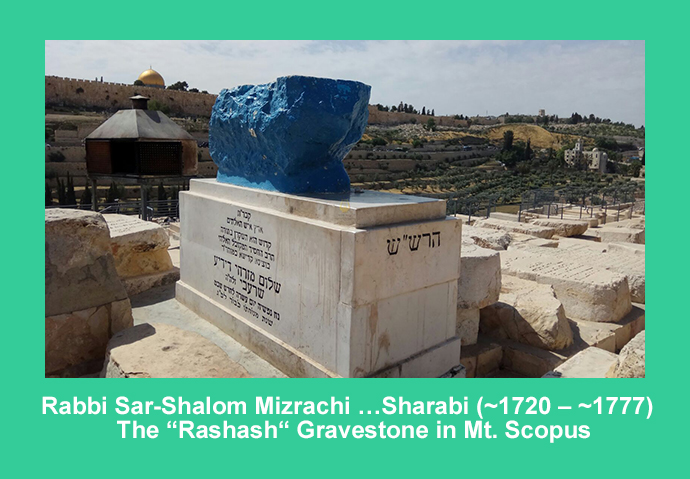
Rabbi Sar-Shalom Mizrachi, a modest person and already a scholar, was determined to keep his knowledge and spiritual abilities hidden. When he arrived in Jerusalem he approach Rabbi Gedalia Chayon, the leader of Beit-El Yeshiva (Religious School), which was a center of Kabbalah study, and accepted a job as a Shammash (caretaker).
A Legend about the Rashash
It is said that his cleverness, knowledge, sharpness and modesty, would never have been exposed without the rabbis daughter, whom he eventually married a few years later.
The story tells that young Shalom Mizrachi attended, whenever he could, sessions of Kabbalah handled by Rabbi Gedalia. Whenever the teacher raised a question that could not be answered by the students – something that upset Rabbi Gedalia very much – the young caretaker would write the answer on a piece of paper and hide it, at night, within the pages of the teacher’s books. At a certain point the daughter of Rabbi Gedalia discovered the notes and then revealed the secret to her father. Rabbi Gedalia acknowledged the young caretaker’s wisdom and modesty. Before his death he appointed Rabbi Shalom Mizrachi as the head of the Yeshiva. And not long afterward the young leader married his daughter and raised a family in Jerusalem.
Preaching Love to Obtain an Ideal Society
Rabbi Shalom Mizrachi, who became the head of the Yeshiva at a relatively young age, established a group of Kabbalists with students and friends, both young and old. The group emphasized unconditional love instead of senseless hatred, which he believed was the underlying reason behind the destruction of the Temple in Jerusalem and he hoped this would help to create a model of an ideal society.
Rabbi Shalom Mizrachi …Sharabi (Harashash) died in Jerusalem and was buried on the Mount of Olives.
The Contribution of the Rashash to Kabbalists
He is considered one of the main pillars of contemporary Sephardic Kabbalists.
The great Kabbalist Rabbi Yitzhak Kaduri used to say, “One can have memorized all of the written teachings of The Ari (Rabbi Itzhak ben Shlomo Luriya, the greatest Kabbalist in Tzfat in the 16th century), study them and the commentaries upon them in great depth, but if you have not learned the works of the Rashash, you have not yet entered into the study of Kabbalah.”
Rabbi Shalom although respected, admired, valued greatly and influential in Israel, did not have much influence on the Jews in Yemen.
After his death in 1777, his son, Rabbi Hizkiyahu Itzhak Sharabi was appointed the head of the Yeshiva in Jerusalem and, after the son, his grandson served the same yeshiva under the same role.
Among Rabbi Sar-Shalom Mizrachi’s Writings
- Perush HaShamash (The caretaker’s Commentary)
- Siddur HaRashash – also known as the “Siddur Ha-Kavvanot” — the main prayerbook used today by Kabbalists for prayer, meditation and study, containing extensive Kabbalistic meditations.
- Rechovot HaNahar (Roads of the River)
- Emet VeShalom (Truth and Peace)
- Nahar HaShalom (River of peace) in which he answers 70 questions of the Torah sages of Tunis
- Chasdei David (David’s Kindness)
- Minhagei Rashash (Customs of the Rashash) – multi-volumed compilations of and commentary upon the customs of the Yemenite Jews. He also produced an exclusive edition of the Shulchan Aruch (“Code of Jewish Law”), where he gives his interpretations of Jewish Law, as well as noting the particular customs of the Shami Yemenite community. These volumes are used by this community still today to reach decisions regarding holidays, marriage and Shabbat services.
Rabbi Yihye Kapah – 1850-1936
Rabbi Yihye Kapah (1850-1936) was born in Sana’a. His mother died when he was one year old. His father remarried but unfortunately 7 years later he lost him as well.
Yihye, 8 years old then, was raised, from that point, by his grandfather Shalom, a poor man, but dedicated to his grandchild and his education.
Rabbi Yihye married Niemee, an embroider and seamstress. He worked as a silversmith. They were poor, some of their children died during the 1905 famine. Only one boy and two daughters survived.
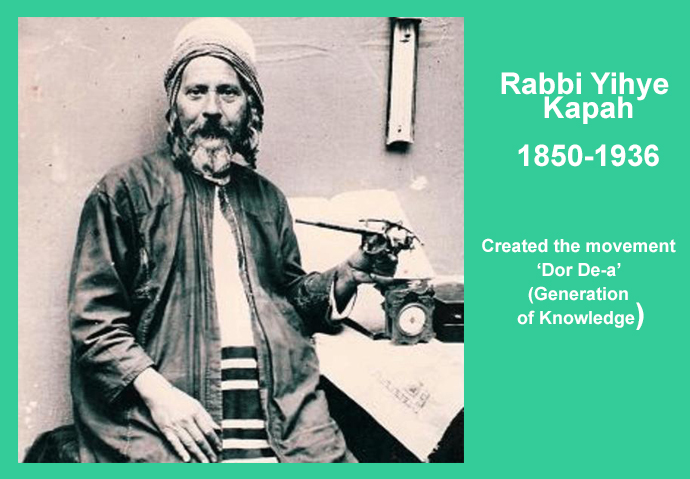
Rabbi Yihye opened, in his house, a synagogue. He aligned himself with the Maimonides school of thought and taught, among bible studies, other subjects like philosophy and science. He dismissed superstitious codes of behavior that he occasionally saw among the members of his community.
Dor De-a (Generation of Knowledge)
He rejected the Kabbalah as an approach in life. He created a movement that he called ‘Dor De-a’ (also referred to as Dardaim – Generation of Knowledge). Its purpose was to acquire more general knowledge, to spread Maimonides’ philosophy, and at the same time, to return to the original habits and codes in Jewish tradition.
At about 50 years old Rabbi Yihye was appointed as the chief rabbi of all the Jewish communities in Yemen. He served in this position for about 6 years, after which he served his community in Sana’a as a teacher of young children.
A few years later, at about 1910, he was appointed to be the manager of the Jewish school that was established by the Ottomans in Sana’a. In this school, besides Jewish studies, the students also learned Arabic, Turkish, and sciences.
Unfortunately, some years later, the school was closed under the order of the authorities due to conflicts between the two schools of thoughts – ‘Dor De-a’, which was represented by Rabbi Yihye Kapah, and the ‘Ikeshim’, which constituted the majority of the Jewish community. The conflicts turned into personal rivals that ended by banning the activity of the ‘Dor De-a’ movement, and having Rabbi Yihye Kapah and some of his supporters put in jail under the suspicion of cooperating with the British and destabilizing the public order.
Rabbi Yihye Kapah died in 1936 and was buried in Sana’a.
Rabbi Itzhak Halevi – 1868-1932
Rabbi Yihye Itzhak Halevi (1868-1932) was born in Sana’a. He served as a political, communal, religious and spiritual leader of the Jewish communities across Yemen for about 27 years.
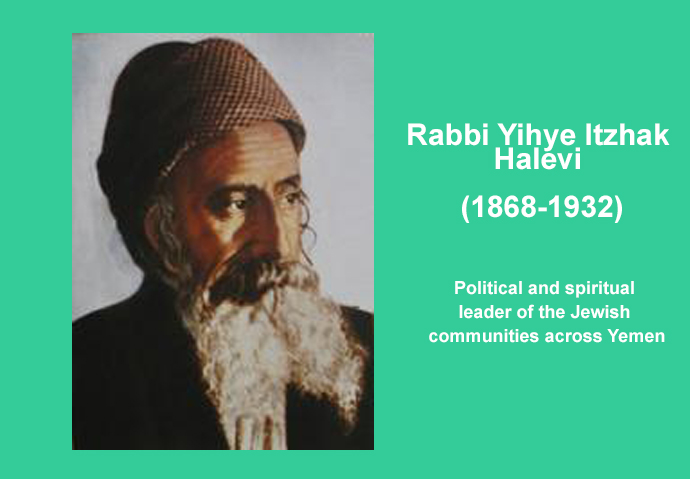
During Rabbi Halevi’s lifetime a number of political events occurred that had an impact on the life of the Jewish community in Yemen. The Jewish Zionist organizations were, at this time, in the early processes of formations. Jewish messengers were sent to Yemen from the holy land to encourage the Jews to come to Israel. The news about the Zionist activity stimulated many Jews in Yemen and small waves began to migrate to Israel. The British held the south part of Yemen while the Turks held central and north Yemen and were in constant battle with the Yemeni tribes that rejected them. Also, during the Rabbi’s tenure as spiritual leader, the 1st world war shook the world’s politics, and much more.
One narrow beam of light appeared after the end of the 1st world war, with the disintegration of the Turkish Empire, when Imam Yihye took control over the territories in Yemen. He adopted a tough stand against his rivals and, among other things, did not tolerate harming the Jews. They were, however, still defined as second class citizens, paying the jizyah tax. And orphans were still forced to convert to Islam.
Gifted and Recognized from an Early Age
Already at an early age Halevi was valued greatly for his deep and clear logic. He participated in debates that sprung from biblical studies and that related to codes of behavior in the community.
At the age of 21 he was already invited to sit in the Jewish courts with judges who, in some cases, were dozens of years older than him. At the age of 29 some of his commentaries on the bible “Tora Me-Tzion” (bible studies from Zion) were published and studied in Jerusalem.
In 1902 Rabbi Halevi was offered the role of the head of the Jewish court in Sana’a, but he rejected this offer.
The next 3 years were difficult – economically, due to the drought, and politically due to the siege on Sana’a by the Imam (1905). Both affected Arabs and Jews as well. Many died, were expelled or ran away from their homes. Rabbi Itzhak, already married with children, fled to Dhamar with his family. There he lost his wife and was left to raise the children.
Appointed as Head of Jewish Communities of Yemen
The Jewish communities in Yemen were at that time at one of their lowest points. Rabbi Itzhak Halevi was appointed, both by the Jewish community and the Imam, to serve together with three other rabbis (Rabbi Aharon Hacohen, Rabbi Yihye Kapah, Rabbi Yihye Avitz) as leaders of the Jewish communities all over Yemen. A year later, all 3 resigned, leaving Rabbi Itzhak Halevi as the sole leader for the next 30 years, until his death in 1932.
Halevi set about to reconstruct the framework needed for the Jewish communities in Yemen. This involved dealing with education, setting up schools and synagogues, taking care of the orphans, welfare, marriages, divorce, death and many more necessary actions.
He needed to set up proper connections with the Muslim authorities. He was also in contact with messengers from the Jewish organizations in Israel and other places. He saved Jewish orphan children, who were facing forced conversion by the Muslim authorities, and helped to send them to Israel.
Adding to this load was his dedication to answering questions that came from the different communities across Yemen regarding court issues as well as business, personal, spiritual and religious issues. He gave his answers and advice in soft and easy tones that were always received and accepted with respect.
Rabbi Halevi’s Approach to Dilemmas of the Community
During a period of conflict between two groups (‘Ikshim’ and ‘Dardaim’), which emerged in the early 20th century regarding the correct attitude toward Kabbalah, he took a stand. Generally he was in favor of a broader education as long as it would not affect the tradition and practice of religion.
His gentle approach, regardless of how difficult or conflicting the issues were, gained him the sympathy of the people, even among his rivals. His relations with the Imam helped him with many of problems that required the Imam’s intervention. But still, he was not able to leave Yemen, under the Imam’s decision. He died in Sana’a in 1932 not fulfilling his most important desire – to live in the Holy land.
Rabbi Hayyim Habshush – 1833-1899
Rabbi Hayyim Ḥabshūsh (~1833-1899) was born in Sana’a and was a member of a family of rabbis and merchants, known to have been living in Yemen many years prior to the emergence of Islam.
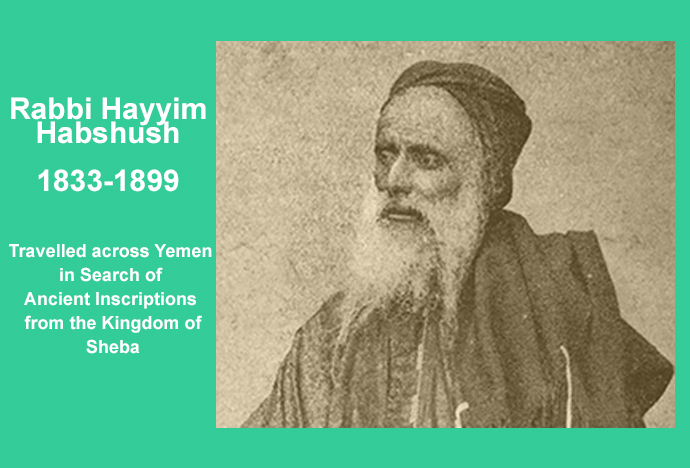
He was a coppersmith by profession and was a respected member of the Jewish community in Sana’a. Together with Rabbi Yihye Kapah, Habshush was involved with a group that favored an open approach to education, intrigued by intellectual developments in the mid 19th century.
While Rabbi Habshush was not considered one of the scholars who had a spiritual influence on the Jewish community of Yemen, we decided nevertheless to add his name to our list since his contribution to archaeology, the study of linguistics and his documentation about the life in Yemen in the 19th century is worthy of attention.
In Search of the Ancient Kingdom of Sheba
In the mid-1800s an expedition to Yemen was organized by the French Academy for Sciences together with the Jewish organization ‘Kol Israel Haverim’ (All Israel Friends) in the hope of locating ancient writings from the Kingdom of Saba (Sheba). The group was led by a European Jewish archaeologist and linguist named Yosef Halevy, who recruited Rabbi Habshush as a local guide. During their travels Habhsush was required to navigate and act as an interpreter, but he also kept copious notes. Some years later another Jewish European Orientalist, named Eduard Glazer, arrived in Yemen. He was also interested in the lost artifacts from Sheba and, intrigued by the information that Habshush had collected, encouraged him to publish his writings.
The Story of the Travels of Yosef Halevi and Habshush
Yosef Halevi arrived in Sana’a in 1869. As an orientalist, linguist and archaeologist, Halevi was asked to look for and collect historical inscriptions from the period of the biblical kingdom of Sheba. A second purpose for his mission was to find out about the state of the Jewish communities in Yemen. While staying with the Jewish community, he got to know both Rabbi Yihye Kapah and Rabbi Habshush. They all shared a belief in rationalism and an open approach towards education, which provided them with a common ground of interest.
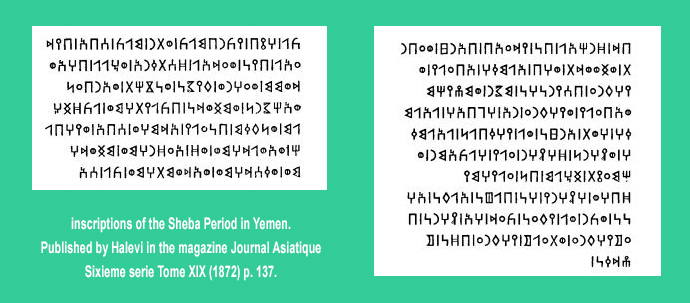
Rabbi Hayyim Habshush joined Yosef Halevy on a long dangerous journey in Yemen. As a native, he was acquainted with the codes of behavior of the local population and had knowledge of the roads. He was able to take them to places that had never been researched before. Sometimes, also with the aid of the local population, he was able to find the stones they were looking for. His gifted skills and his visual memory helped him transcribe the text of many inscriptions. He usually transcribed the texts into the Hebrew alphabet in order to simplify the process of decoding the inscriptions.
One of the most interesting results of Yosef Halevi and Rabbi Habshush’s expedition was, perhaps, the discovery of the remains of the ancient city of Telmas. They found these remains in the old part of the city of Tza-ada, in northwest Yemen. This city was mentioned in the 11th century by the traveler and researcher Binyamin of Todela, but until the expedition by Halevi and Habshush, nobody had been able to pinpoint where it was.
On another occasion Habshush went on a journey without Yosef Halevi, who was ill in Sana’a. Habshush arrived to Ghayman, a village with a small Jewish population a few kilometers southeast of Sana’a. The local Yemenis were suspicious of him. Still, he was able to convince them of his noble cause and was able to dig, discover, expose and copy many more inscriptions of the Sheba period. In total their expedition resulted in the discovery of over 600 inscriptions.
Habshush Meets Eduard Glazer
Habshush and Halevy, it seems, ended their travels on a note of discord. Cultural differences resulted in disagreements and, in the end, they did not continue collaborating. However, a number of years later Eduard Glazer (1855-1908), an Austrian Jew who was a geographer and linguist, visited Yemen a few times on scientific and archaeological missions. During his visits he also collected inscriptions from the period of the kingdom of Sheba. He met Rabbi Habshush in Sana’a and was assisted by him with the work of transcribing and translation of the inscriptions.
Eduard Glazer approached Rabbi Habshush asking him to write reports in his mother tongue (Arabic/Yemenite-Hebrew) about the journeys he had made with Yosef Halevi. Habshush, who had already recorded his journeys in Hebrew, did so. The result was published later in a book called “Habshush Journeys”, (1st edition 1941, 2nd edition 1983 edited by Prof. Shlomo Dov Goiten)
While Hayyim Habshush was not a well-known archaeologist or linguist, his contribution was then, and still is today, significant. He was charismatic, daring and was gifted with an unusual memory that enabled him to accurately record various transcriptions that could not be removed from their original locations. In addition to the recorded transcriptions and their translations, his book provides unusual insight into the culture of the different Jewish communities of Yemen that he and Halevy encountered during their travels.